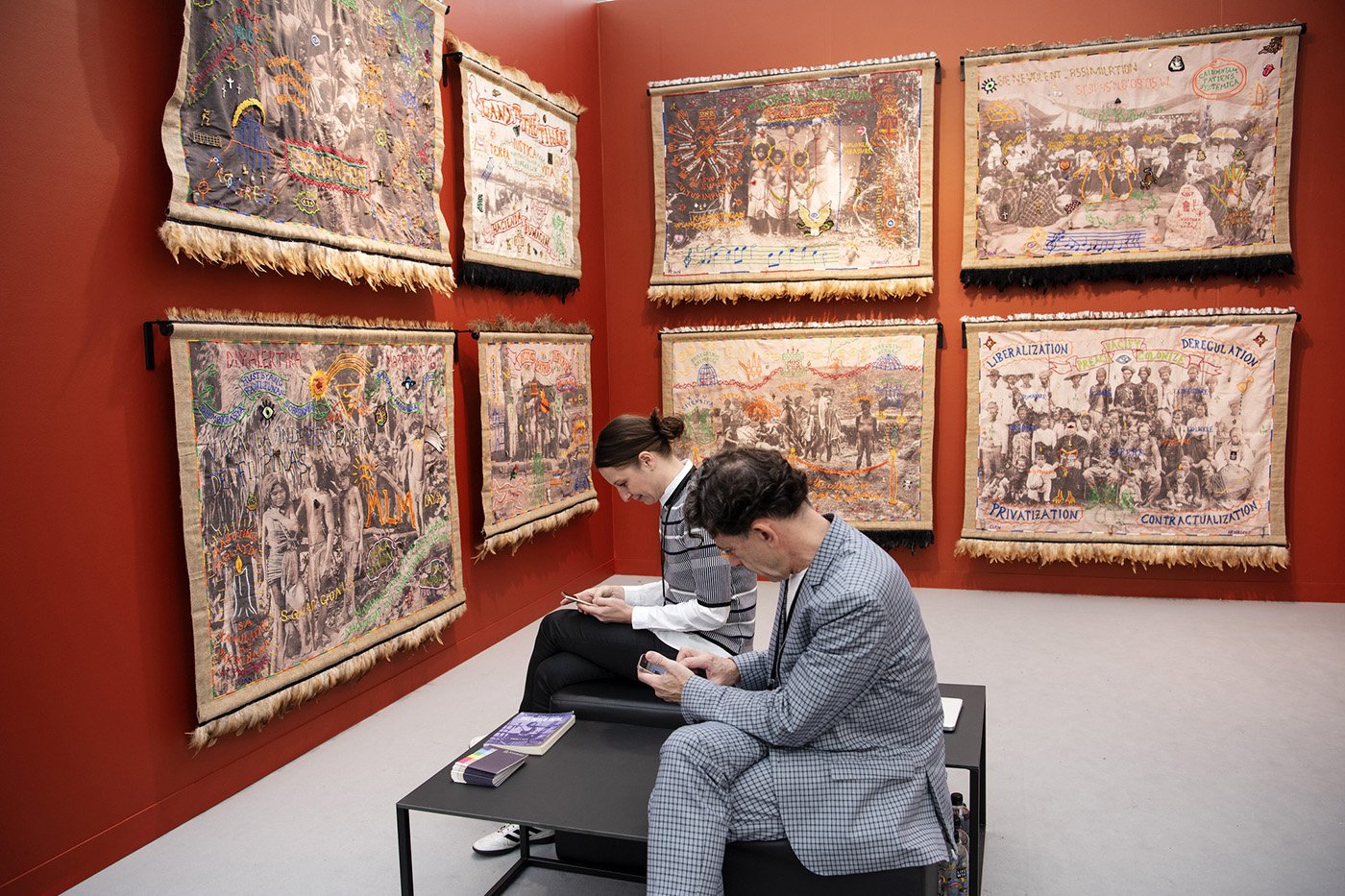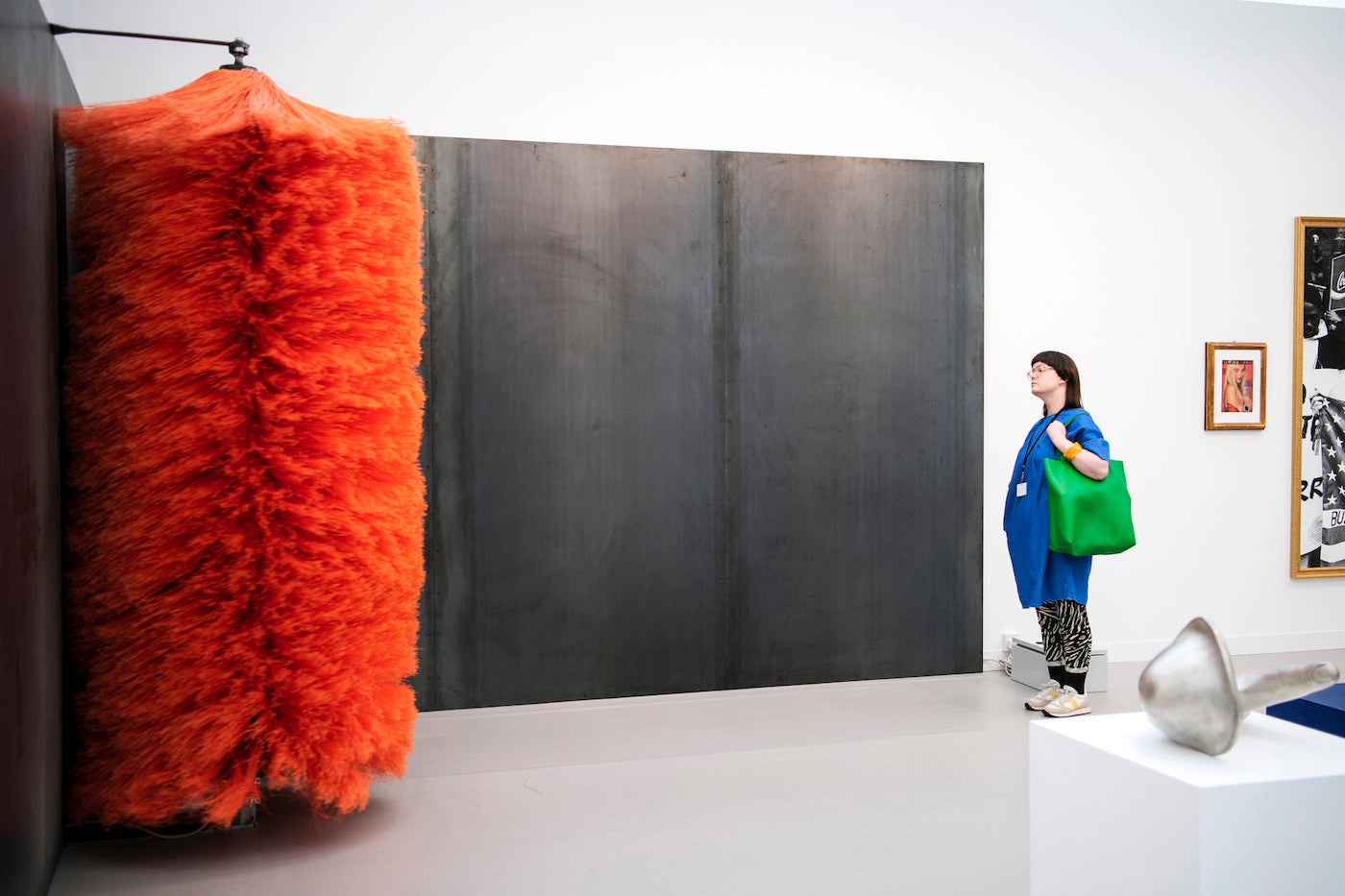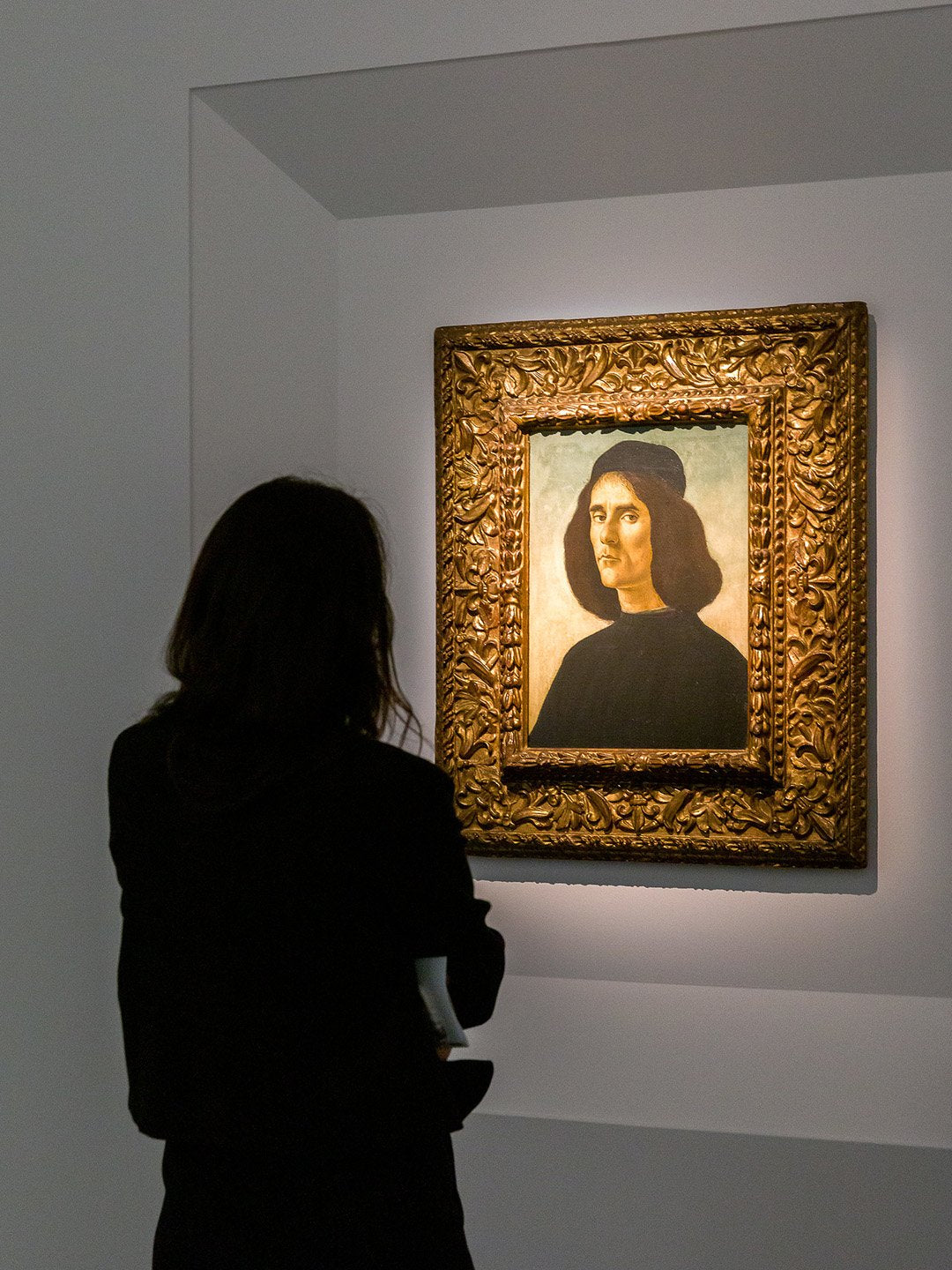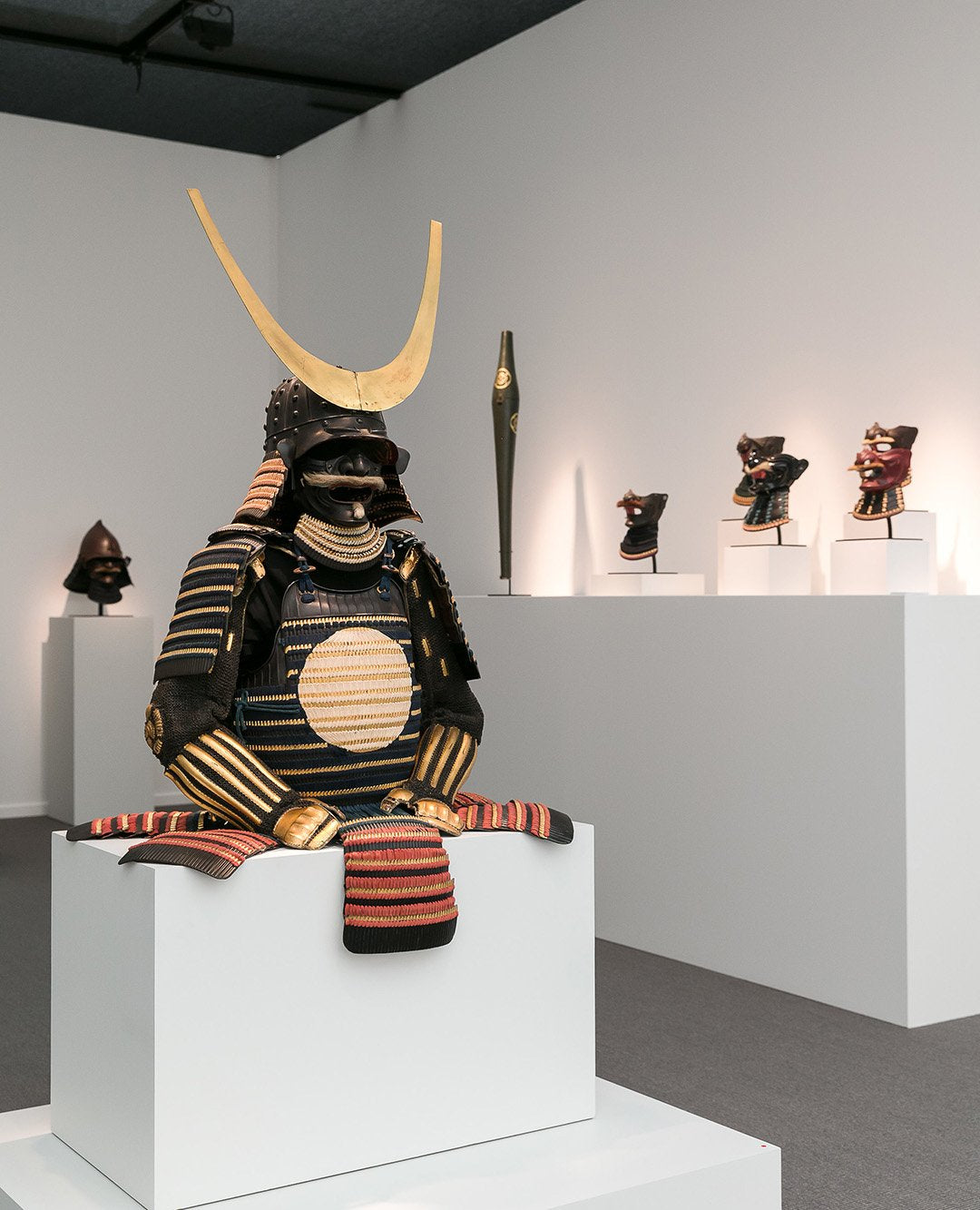
10/2019 visual culture
As one of the art world’s premier dates, the start of October saw artists, gallerists, collectors, and curators descend upon London for Frieze Art Fair. One significant takeaway from this year’s edition is that, in the wake of the Anni Albers show at Tate Modern in 2018, textiles are having a moment.

Filipino artist Cian Dayrit showcased his solo presentation as part of Cosmin Costinas 'Woven' collective at Frieze London 2019. (Photo: Linda Nylind. Courtesy of Linda Nylind Frieze)
While there was a variety of textile art throughout Frieze London, this year’s fair featured a special section dedicated to artists working with the medium and exploring themes of colonial legacies. Curated by Cosmin Costinas, ‘Woven’ featured eight micro solo presentations of artists from around the world. The work of Filipino artist Cian Dayrit whose work weaved together archival photographs and embroidered slogans, figures, and forms was particularly striking. The end result created patchworks of imagery and symbols that subvert Western colonial attitudes towards indigenous cultures.

Galleria Franco Noero showcased Lara Favaretto's spinning car wash brushes during this year's fair. (Photo: Linda Nylind. Courtesy Linda Nylind Frieze)
In the main part of the fair, leaving aside the textile trend, there were some fantastic individual works, with a highlight being Lara Favaretto’s colorful spinning car wash brushes being shown by Galleria Franco Noero, which was possibly the standout candidate for most-Instagrammable work of the fair. But, possibly even more noteworthy were the several booths created by galleries as more holistic experiences, rather than simply offering visitors a selection of unconnected works from their stable of artists.

Donna Huanca, Simon Lee Gallery. (Photo: Linda Nylind. Courtesy Linda Nylind Frieze)
Simon Lee Gallery’s presentation of Bolivian-American artist Donna Huanca was a colorful yet calming multi-sensory experience that combined abstract painting and sculpture with a soundscape and soft, white sand underfoot. An experience that provided a pleasant few moments of mental respite from the overall madness of the occasion.
Travesía Cuatro, on the other hand, turned their booth into a delightfully over-the-top drawing room, featuring work by British painter Charlie Billingham and Mexican ceramicist Milena Muzquiz. By combining paintings in a salon-style hang, colored wallpaper, plant-housing ceramics, and a gallerist-bearing sofa, the gallery created an almost domestic setting within the walls of the fair in which visitors could appreciate the art on display.

Trinity Fine Art showed what is speculated to be the last Sandro Botticelli in private ownership in their Frieze Masters 2019 booth. (Photo: Mark Blower. Courtesy of Mark Blower Frieze)
Across the other side of Regent’s Park, Frieze Masters didn’t disappoint with its now customary juxtaposition of objects ranging from antique maps to works by Modern masters. Possibly the standout object of this year’s offering was what is purported to be the last (Sandro) Botticelli in private hands–a portrait of the poet and soldier Michael Tarchaniota Marullus. The painting, which had been on long-term loan to the Museo Nacional del Prado in Madrid, depicts a dark-haired man with a stern, sideways looking glance. Despite its small size, Trinity Fine Art dedicated its entire stand to showing off this Botticelli masterpiece, with visitors only able to glimpse the painting after passing behind a protective wall that shielded the work from view.
On a different end of the spectrum and featuring work created almost 500 years after Botticelli’s portrait was Zurich's Mai 36 Galerie booth. While on first impact the grouping of cute seals and colorful reworking of Mondrians mounted on a silver and love hearts covered backdrop may have seemed joyous, the background was far more poignant. For their display in the Spotlight section, Mai 36 Galerie brought together a selection of works by the artist collective General Idea that had been shown at the gallery 25 years earlier in an exhibition entitled INFE©TED. The show in 1994 proved to be the group’s last, as that year two of its members, Feliz Partz and Jorge Zonta, died as a result of AIDS-related causes, leaving only the final member AA Bronson.

Galerie Jean-Christophe Charbonnier featured a glimpse into an upcoming project on Japanese artisans at Frieze Masters 2019. (Photo: Mark Blower. Courtesy of Mark Blower Frieze)
One final highlight from the fair was the antique samurai armor being displayed by Galerie Jean-Christophe Charbonnier. Having recently spent time researching Japanese artisans preserving the art of creating these exquisitely crafted objects for an upcoming project, this was a fantastic opportunity to admire the skill required to make these intricate pieces in real life.
Pioneering collector Erling Kagge explains how to use passion and intuition to acquire key pieces or build a collection














